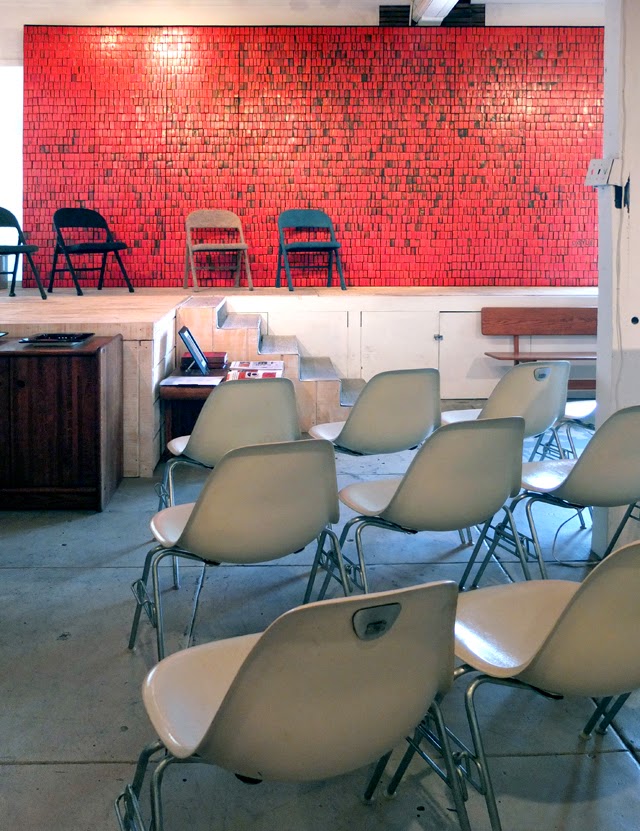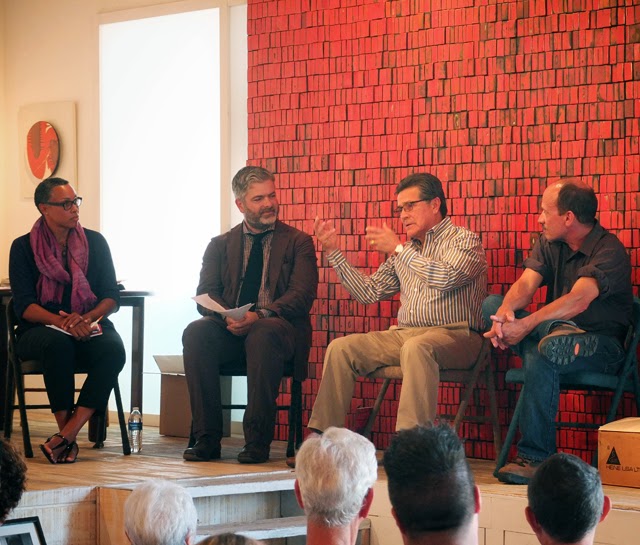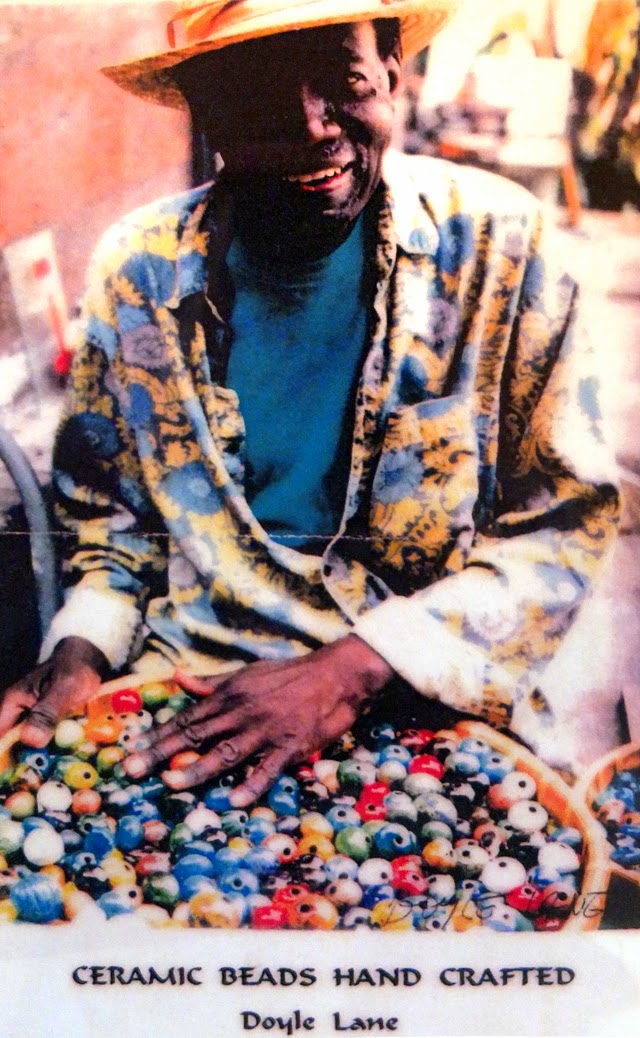
The Doyle Lane Summit happened this past Saturday at The Landing / Reform Gallery. It featured a panel discussion and book release for the exhibition, Doyle Lane: Clay Paintings

The star of the show, the Mutual Savings and Loan mural, accompanied by felt chairs by Tanya Aguiniga and Eames in the audience.

It was a packed house. A lot of hands raised when it was asked who owned a piece by Lane.

Left to right: Mandy Kahn- Communications Director at Reform; Jill Moniz- Former curator at California African American Museum, Gerard O'Brien- Owner of Reform, Rudy Estrada- Close friend of Doyle's; and Ben Sarar- another close friend and the photographer whose images captured a rare look at Doyle in his element, creating art.
The curator, the dealer, the friend/patron and the friend/photographer each shared their perspectives on Lane. The topics ranged from art, friendship, race, religion, sexuality and even toxic Superfund sites.

Here, Rudy is recounting how Doyle would give him and the other neighborhood kids weeds pots when they came by the studio. They would then proceed to throw and destroy them, just for fun (I was cringing). He figured they must have gone through hundreds of thousands of dollars worth. He also told a story of how, later in life, he hired Doyle to do a ceramic installation at his house in Pasadena. He was out when Doyle came to work and when arriving back home, Doyle was face down in the front yard, being harassed by the Police. He was of course mortified by seeing this happen to his good friend, but he said Doyle handled it well. The story is an example of the difficulties facing African American artists, particularly at that time.
Rudy and Ben both mentioned how humble, sweet and generous he was. It's comforting to discover the artist whose work I enjoy so much was also such an endearing figure.
If you can't tell by the big smile, Gerard was on cloud 9. I'm pretty sure this is why the event was called a summit.

Doyle was obviously a remarkable talent and he had a strong work ethic, but wasn't much of a self-promoter. Although he did get a handful of major mural commissions, most of his income came from direct sales from his studio and craft fairs. He was able to make a living from his craft, which is more than most craftspeople were able to do. However,his humble approach to promoting himself, combined with the barriers facing African Americans artists, meant he never received the recognition he deserved.
Although a small number of museums do have pieces in their collections, this exhibition at Reform/The Landing represents the largest showing of Lane's work perhaps ever, but certainly since a 1977 clay paintings exhibition at the Los Angeles City College Gallery. Over the years Reform has sold a lot of Lane (it's where I bought my first weed pot in 2005), but this exhibition was not about sales. This was Gerard's desire to share Doyle Lane's story, a man who for various reason --none being related to his work-- never received the notoriety he deserved. I have a feeling this exhibition will change that. All anyone needs to do is see a piece in person to realize Lane was a true master.
Photo: Collection of Ben Serar. The year and photographer are unknown.

The exhibition catalogue, Doyle Lane: Clay Paintings
The unglazed weed pot belongs to Ben Serar

This is the first ever book on Doyle and it's a good one.
The forward was written by Ricky Swallow. Being an artist himself and a Lane collector, Ricky was able to set the context and articulate the power of Doyle's work like few could.

Photo by Ben Serar
More about the exhibition, here